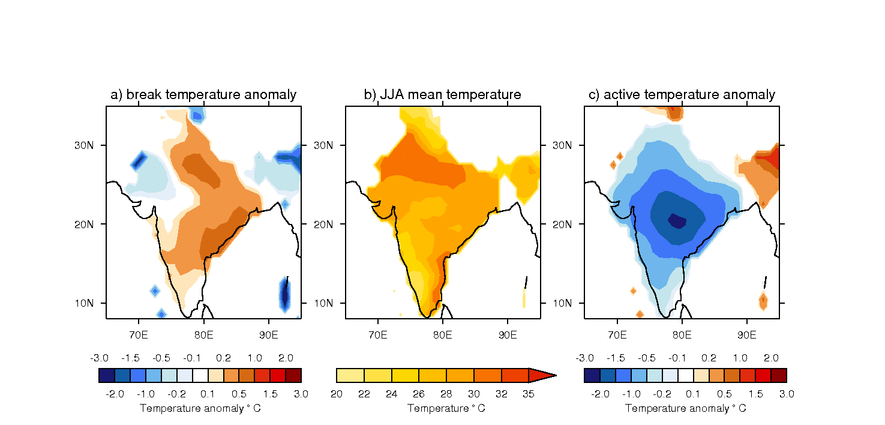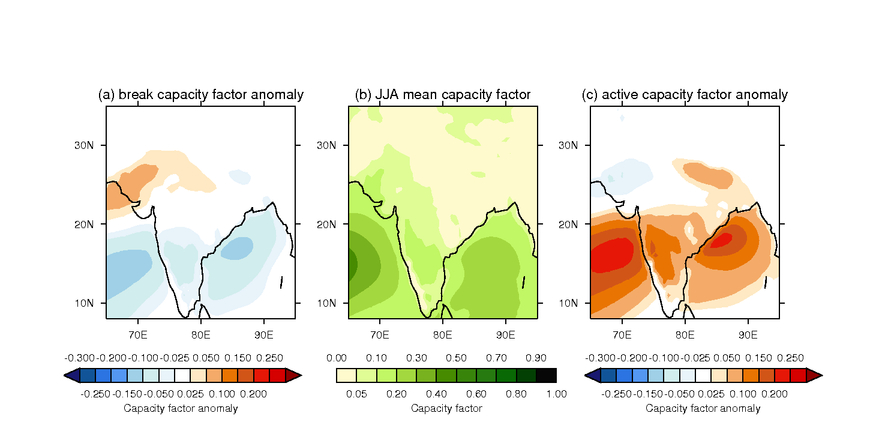Menu
The impact of seasonal & diurnal cycles and intraseasonal variability on renewable power generation in the Asian monsoon region
The Indian summer monsoon dominates the seasonal cycle of precipitation and wind patterns across India. As a developing country, India is keen to invest in renewable technology, with hydro-power and other renewable sources compromising one-third of current installed capacity. However, hydro-power, solar power and wind power electricity generation are all dependent upon the prevailing meteorological conditions, which are strongly influenced by the monsoon and its associated variability. As wealth in India rises, there is increasing demand for electricity for cooling purposes, especially during the warm monsoon season. My dissertation aimed to understand the impacts of variability within the monsoon on temperature-related electricity demand and renewable power electricity generation.Demand and wind power output within the different phases of variability are assessed to establish the impact of variability on the Indian power sector. The dominant mode of variability considered on intraseasonal time-scales are the monsoon active and break cycles. Reduced precipitation during the break phases gives higher temperatures and thus higher cooling energy demand (Figure 1). The northward propagation of the monsoon trough during break phases, gives higher winds and greater wind power output over northern India, and less wind power output over southern India (Figure 2).

Figure 1. Surface mean temperature during active, break and climatological JJA conditions: (a) and (c) show the temperature anomaly in break and active phases respectively, when compared with neutral conditions, (b) shows the long term average surface temperature during JJA.

Figure 2. Wind-power capacity factor during active, break and climatological JJA conditions: (a) and (c) show the capacity factor anomaly in break and active phases respectively, when compared with neutral conditions, (b) shows the long term average capacity factor during JJA.
This has implications for the Indian Power Sector. Monsoon break phases, with high temperature-related demand and low wind power generation in southern states, may result in potentially stressful period within the Indian power sector, best mitigated by wind power in northern states, which produce higher output during break phases.
Overall, my dissertation identified monsoon break phases as potentially challenging periods for the Indian power sector. The paper published on this can be found here.